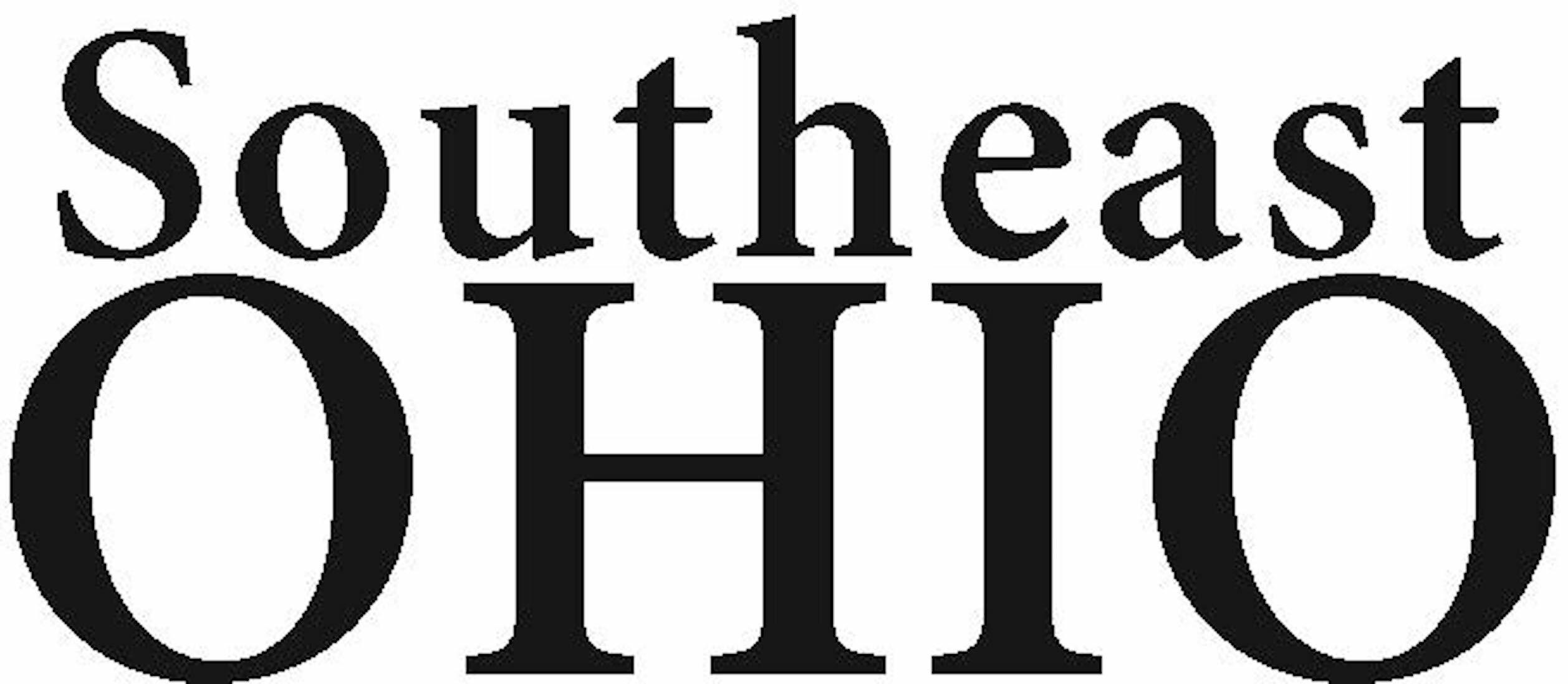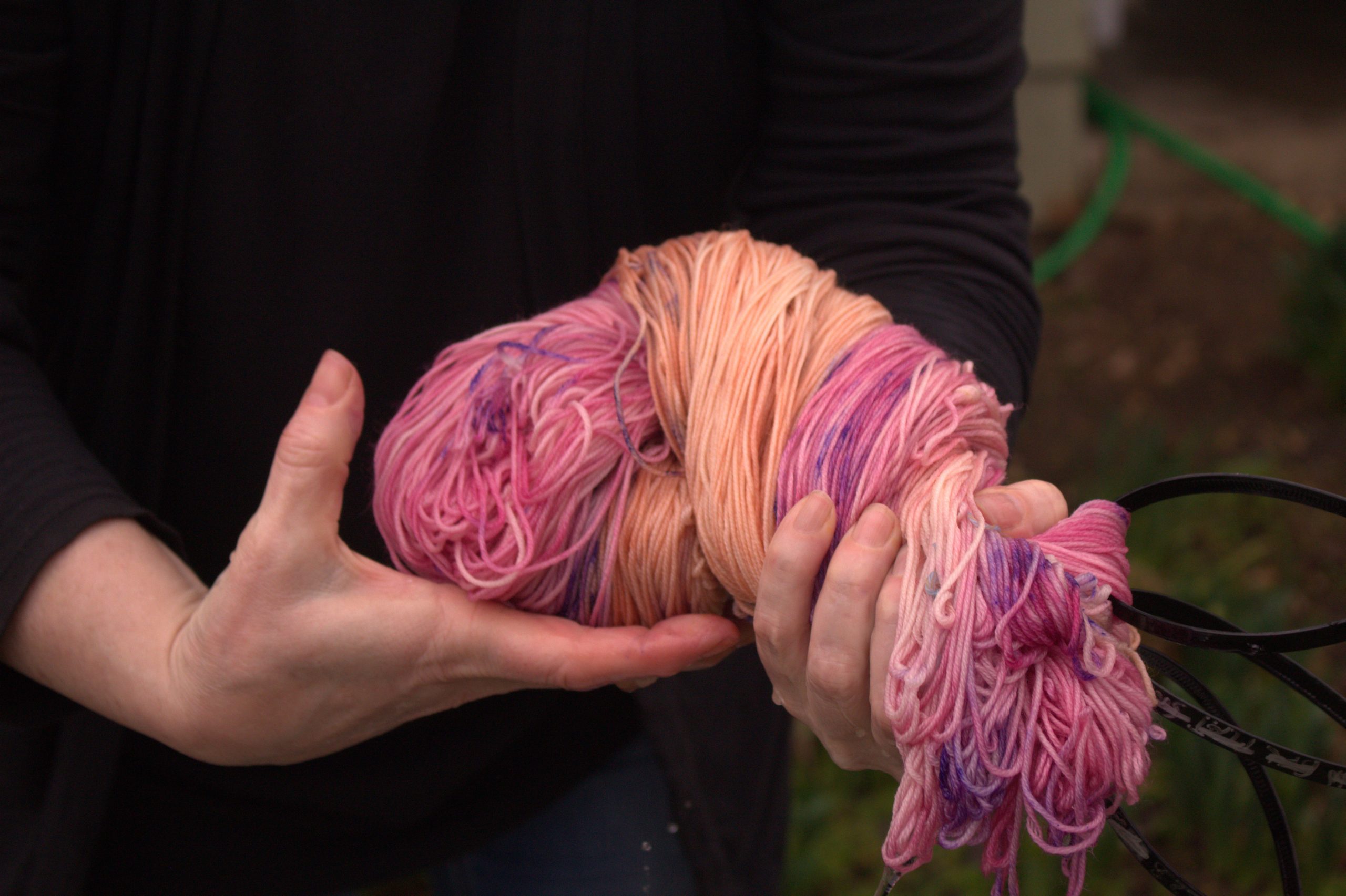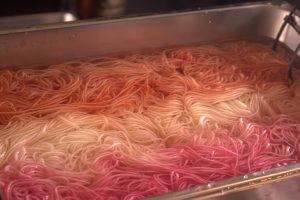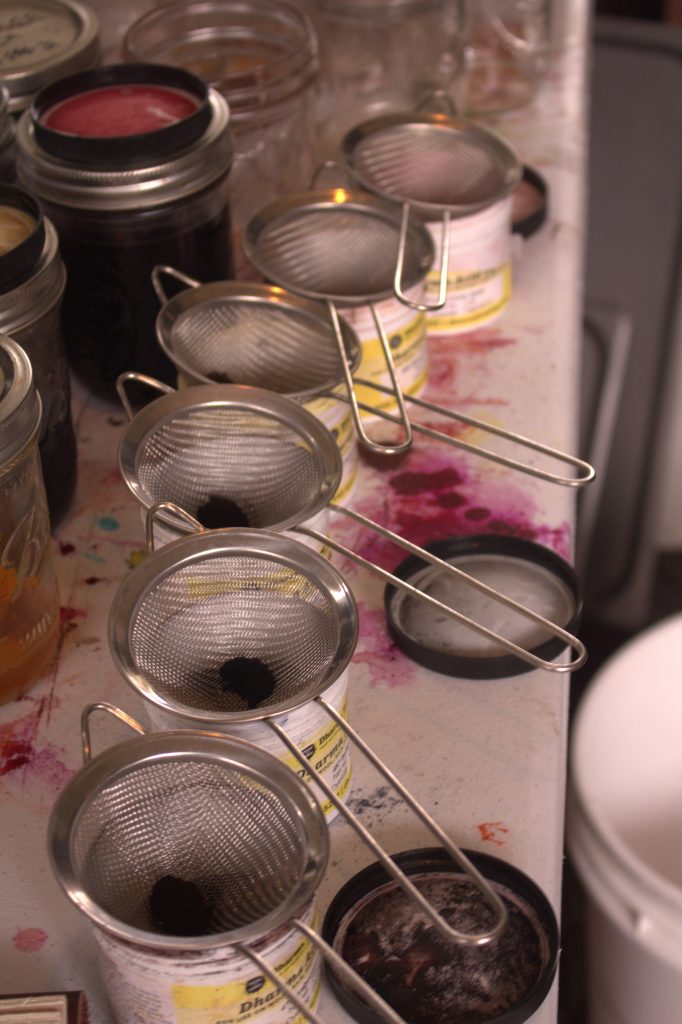Lisa Heinz, owner of Southeast Ohio Fiberworks, keeps fiber crafting alive with hand dyed, hand spun yarn
Lisa Heinz is an Athens-based artist whose love for fiber crafting led her to explore wool. Heinz is the owner of Southeast Ohio Fiberworks, a small business committed to creating ethically sourced, reworked wool products like yarn, roving and fleece.
Heinz spends most of her days in her happy place: A garage-turned studio filled with endless yards of yarn and 300 pounds of wool. Despite being busy with projects, Heinz pauses her work to answer some questions about how she arrived at this place – both figuratively and literally.
Tell us about your background in fiber arts.
I’ve been into textiles, like fiber crafting and sewing, since I was a child. I picked up quilting after I got married and came to Athens in ’92. Prior to that, I learned crochet and embroidery from two grandparents and sewing from my mom. I just kind of took those skills and had odd jobs. Like when I was at Michigan Tech, I spent two years in the costume shop doing things with the theater, or about 15 years ago when I started knitting socks. I just kept on going from there.
What was the catalyst for establishing Southeast Ohio Fiberworks?
This business has been in the back of my mind for probably five or six years. I would wonder: where do we get our wool from? So, I started doing research. How many sheep are here? What do they [local farmers] do with all their wool?
At first, local people would say, “oh you wanna do wool stuff? Makers Space is over there,” and I’d be like, “um, no.” I already know how to knit, that’s not what I’m talking about.
I’m talking about making yarn; going through the process of finding it at the farm and making yarn from it. I wondered how this process worked, and I decided to work on it by myself.
How did you figure the process out?
Somehow, I get in touch with these farmers. A mutual friend thought one of these farmers would need some help. She hadn’t been able to get her flock sheered in like three years. They were in rough shape. She didn’t think of their fleece as being valuable. She had Jacob sheep, which have big horns, but they’re sweet. I thought, “You have Jacob, are you kidding? Lady, you have some nice stuff here.” We developed a good relationship.
When I get it [the fleece] home, I have two options: I can clean it and process it myself or I can ship it off to a mill. I’ve started taking the raw wool and processing it myself.
If someone is hand spinning yarn, they will buy roving. Roving is basically a long snake of wool that’s been cleaned and pulled into that shape. Right now, I’m making roving out of the Jacob wool.
What do you do when you do need help?
There’s a pretty strong artist community around here. They understand the creative mindset and how weird we are sometimes. A lot of fiber people, whether they are knitting or spinning or crocheting or felting, see it not as a solitary activity. They like to do this in groups. Being at the [Athens] farmers market has been nice because people don’t come just to buy the yarn, they want to talk. If they have a problem and they know I’m there they will come and say “hey, will you help me figure this out?” I appreciate the sense of community. Even if you don’t see someone every day, they’re supportive.
Who are your best customers?
It’s mostly experienced knitters. It’s older women, like 45 and above. At the farmers market, it’s been a little more half and half between the 20- and 30-somethings and the middle-aged folks. I see a lot of students coming in, and then they bring their moms, or their grandma, and they all buy yarn.
How has the pandemic affected the fiber crafting industry?
It’s actually taken off so much that the places that supply the yarn can hardly keep it in stock. My hope is that the people who are picking up these new skills continue doing that so those of us who are just getting into the business now can still have a market.
What does sustainability mean to you?
I’m looking at things big picture, from farm to garment, basically. I see room for improvement along the entire wool ecosystem. There’s an organization called Fibershed, and they identify and develop a fiber ecosystem in a specific region. They try to make a product that isn’t so full of chemicals – something that will actually compost.
Wool and other natural fibers have a life cycle. A wool garment can last 30 years or longer if it’s taken care of. When it can’t be used for anything else, put it in your garden! That’s the kind of area I want to work in because it fits with my values. I try really hard not to have unnatural stuff in my life.
Sustainability is not just what I do here, it’s the choices I make. I don’t want chemicals in my body, so I eat organic. I want clothes that feel right not only by touch but emotionally and mentally too. I want to keep my life free of the guilt of something that isn’t sustainably created. This goes for the business, too.
What do you hope is your long-term impact on the community?
I hope to have created a sustainable supply chain for a wool ecosystem that used to exist here but doesn’t anymore. I’m rebuilding that. That is one of the things that would make me feel really good when I leave because then it can go on its own. There would be the people creating the wool and there would be a market for it. Without a market, there is no value for their wool. Getting that system set up and making people aware of it is the key. If I don’t end up doing this in five years, hopefully someone else will take it over and continue what I’ve done. It’s all about my love for the wool.
Related posts
What’s Inside
- Behind the Bite (68)
- Features (124)
- In Your Neighborhood (102)
- Photo Essay (4)
- Read the Full Issue (8)
- Talking Points (48)
- The Scene (15)
- Uncategorized (3)
- Web Exclusive (5)
- What's Your Story? (21)




Find us on Social Media